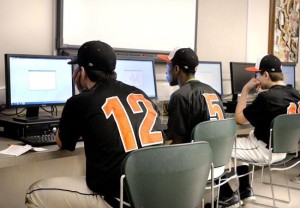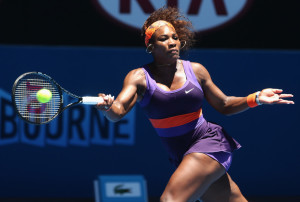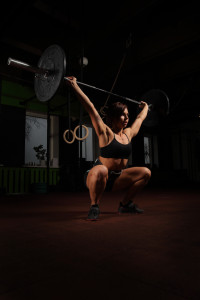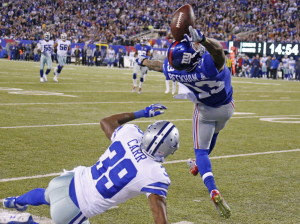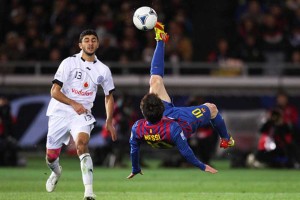Concussion – Some thoughts on returning to play, work, and school.
Posted on May 9, 2016 by Dr. G
“Sport is sport, sport is NOT health” Ben Velazquez
Having a practice that specializes in metabolic, immunologic, structural, and neurological health- my interest in the brain and what impacts it takes up a considerable amount of my time and attention. In addition, I have young competitive children who are becoming teenagers. It seems that kids these days are playing, practicing, and training more than my generation ever did, and they are typically oriented to one sport.
As a parent and as a doctor, I would like my education, experience, and research to be focused on injury prevention. Many of my patients of course find their way to me for treatment due to injuries related to concussion. However, in this post, I’d like to focus on the prevention of all sports related injuries.
Last week, I attended a lecture presented by a colleague of mine, Ben Velazquez. The audience was comprised of athletic directors from many of the elite private schools in the northeast. Ben is in high demand here in NYC because of his extensive education and many years working with elite collegiate and professional athletes, their coaches, trainers, and doctors. Ben has the best understanding of post acute rehab training that focuses on the relationship between the nervous system and the ability to produce force, speed, accuracy, agility, strength, and perceptual awareness.
Ben specializes in post concussion syndrome. When a professional soccer player, or any athlete, is symptom free and has been given the clearance by their doctors to go back to full activity, but the athlete is having difficulty returning to the level of skill prior to the injury- enter Ben Velazquez. Ben understands that the physical exam performed in a doctor’s office or a computerized neuropsychological test (Impact test) cannot possibly reproduce or predict the high speed multivariable neurological calculations that occur 1000 times per second on the field of play by the brain and nervous system of any athlete (child, adult, professional, or weekend warrior).
Think for a second what has to happen in the brain of an athlete that has to position every joint in the body, create massive ground force, pivot, rotate, and sense without seeing every other player on the field in order to perfectly time the opportunity to score a goal or catch a ball off balance at high speed. When a player returns to the field after an injury with a neurological mismatch between what he/she thinks they can do and what the nervous system can actually do, the risk for injury dramatically rises. I call this the reality-perception mismatch. This mismatch is greater in non-athletes and almost non-existent in elite athletes. The question is not whether or not there is a mismatch, but rather how has the mismatch changed pre and post-injury, and can we get back to pre-injury state? Can we get better than pre-injury state if the mismatch may have contributed to the injury to begin with?
We now know there is a period of time after a concussion that can last weeks to months that leave athletes susceptible to a 2nd impact concussion. We also know the risk of injuries to the knee, shoulder, hip, and elbow are far greater in previously concussed athletes. We’ll touch more on this later in the post.
There are many components to addressing the neurological state of an athlete. I want to discuss one of the most interesting aspects of returning to play and post rehab exercise. The point just prior to being released back to full activity is the focus of the rest of this article.
We want to be able to re-create the demands on the playing field in the controlled environment of the gym or training facility. Those demands are on fuel delivery, strength, speed, agility, force production, range of motion, and complex coordination of muscle groups while creating and accepting ground force. The exercise that can recreate all of these demands in a controlled measurable safe environment are olympic lifts. Olympic lifts are the most neurologically demanding exercise of this type. Olympic lifting requires you to accept ground force, communicate ground force through the bar, exercise good posture, catch the bar with good posture, and express fairly high G-forces, speed, mobility, range of motion, and strength all at the same time.
Olympic weightlifting is not just for football players or athletes interested in strength gains. Olympic style weightlifting is for male, female, teenage, adult, over the hill, professional, amateur, and weekend warrior athletes. Having the skills and technique mastered prior to an injury or surgery can come in handy as part of an athlete’s return to play regimen. Of course, this takes place as part of the end of the rehabilitation journey, whether we are talking about concussion, surgery, or injury rehab.
As it relates to concussion, the metabolic demand of this type of workout is what particularly interests me. The metabolic demands are related to the efficiency with which you can deliver fuel (glucose and oxygen) to the tissues that demand them. Most people think that the greatest demand with these types of exercises is on the heart, lungs, and muscle tissue. That is where they are mistaken. The metabolic demands placed on the nervous system is where we are likely to see the greatest challenge. We are talking about the energy requirement of the “wires” that tell the muscles to contract and the “wires” or nerve fibers that coordinate the different muscle groups.
When Ben Velazquez was training my daughter Zoe to do olympic lifts, it was the first time I had seen her truly fatigued. As a soccer player and track athlete who runs the mile, she is very fit for a 13 year old. I’ve seen her train, run, and even play 2 full field soccer games back to back without showing me any signs of fatigue or slowing down. However, the olympic lifts put such a demand on her nervous system, the fatigue is truly neural fatigue- fatigue experienced by the neurons responsible for the activity.
The most oxygen sensitive organ in the body is the brain, and the part of the brain that demands the lion’s share of the oxygen is the cerebellum. The little part of the brain that is located in the back of your skull is responsible for your hand eye coordination, posture, timing of movements, accuracy, and muscle firing patterns. This includes gut, immune, and cardiovascular function among others. The cerebellum and in particular the vestibulocerebellum (balance, eye movements, and posture) is where persistent concussion symptoms invariably stem from. All concussions involve the vestibular system.
Restoring the ability of the neurons in this organ to efficiently produce energy and have fuel (oxygen and glucose) delivery, should be the last step in the concussion rehab and return to play decision-making process.
While doctors, athletic trainers, and coaches are focusing on player symptoms and neuropsychological testing at a computer (Impact testing) to make decisions about returning to play post-concussion, they are ignoring the subtle functions of the cerebellum and vestibular system. This can put the athlete at risk.
An examination of the cerebellum, as it is conducted in a doctor’s office, can rule out pathology of the organ that is related to disease or stroke but will not likely detect the mild imbalances and inefficiencies that can only be detected by a skilled clinician with the help of some computerized analysis. A trainer who understands neural fatigue and what that athlete’s abilities were pre-injury can also be consulted. The subtleties of cerebellar function can only be seen on the practice field or in training and game situations.
It is the cerebellum that determines all of the factors that relate to angulation of joints and posture, and this cannot be tested with a computerized neuropsychological test or physical exam. If there is residual dysfunction, the risk for injuries seemingly not related to concussion increases. These injuries include ACL ligament tears, meniscus tears, chronic ankle strain or sprain, tendonopathies, hip and shoulder labral tears, rotator cuff injuries, and more. The research is clear on this issue. Athletes with history of concussion are up to 4 times more likely to suffer a seemingly “unrelated” orthopedic injury. The trainers, therapists, and doctors must understand how soft tissues (muscle, tendon, ligaments, and fascia), higher brain centers, and joints communicate with the cerebellum in order to effectively return to full abilities.
I know of very few people with experience in the post acute rehabilitation, pre- 100% back to play space, who have the knowledge and experience to address the issues raised here in this post. Ben Velazquez is who I trust with my children and who many agents, coaches, and trainers trust with their elite athletes.
Thanks for reading!

